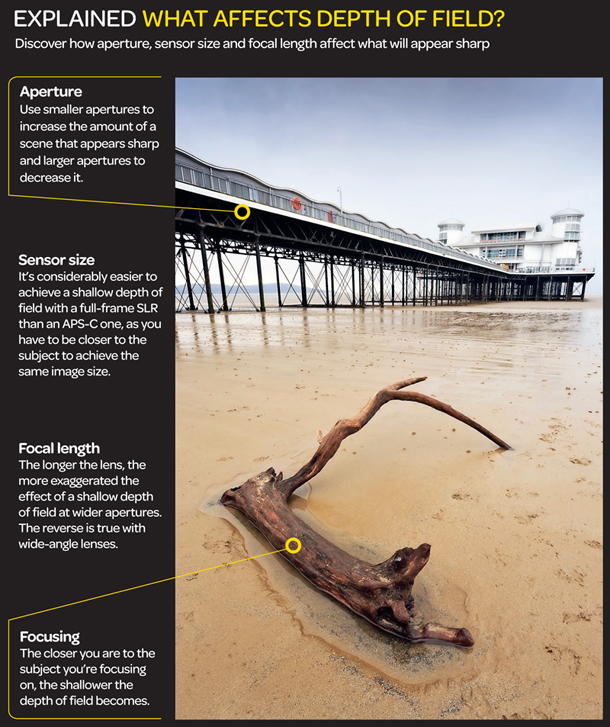Last Updated on 03/31/2020 by Chris Gampat
This photography cheat sheet will help you understand the elements that determine what appears sharp in your shots.
Depth of field is one of the photography concepts you’re guaranteed to come across, but may take some time to understand through practice. The term is commonly defined as the distance between the closest and the farthest objects in the photo that appear acceptably sharp. This term typically pops up whenever aperture and bokeh are mentioned because the three are tied together; aperture is one of the factors that affect the depth of field, while bokeh demonstrates a quality of depth of field. What about the other factors? Today’s featured photography cheat sheet has some answers.
The guide below, by Digital Camera World, explains how depth of field is affected by the following elements: aperture, sensor size, focal length, and focusing. Make sure to keep a copy of this cheat sheet handy on your next practice to help you better learn how it works.

Aperture is one of the main elements that affect depth of field. We always hear tips say smaller aperture settings increase the depth of field. This means they increase the area of a scene that appears in sharp focus. So, they are particularly best used for landscape photos, where as much of the scene, from the foreground to the horizon, needs to be in focus.
Sensor size is another factor. According to the cheat sheet, if you want to get a shallow depth of field in your photos, it will be easier to achieve with a Full Frame SLR camera compared to an APS-C camera. This is because you need to be closer to the subject to achieve the same image size.
When working with depth of field in mind, take note of the focal length you’re shooting with. Longer lenses or telephoto lenses will exaggerate the look of a shallow depth of field in wider apertures. The opposite is true when you’re shooting with wide-angle lenses.
Lastly, focusing also affects the depth of field; the closer you are to your subject, the shallower the depth of field becomes. You see this in action when you take close-up portraits, with the shallow depth of field often producing a pleasant bokeh in the background.
Need more photography tips and tricks like this? Don’t forget to check out our photography cheat sheet collection to find more that will come in handy for your next shoot and projects!


